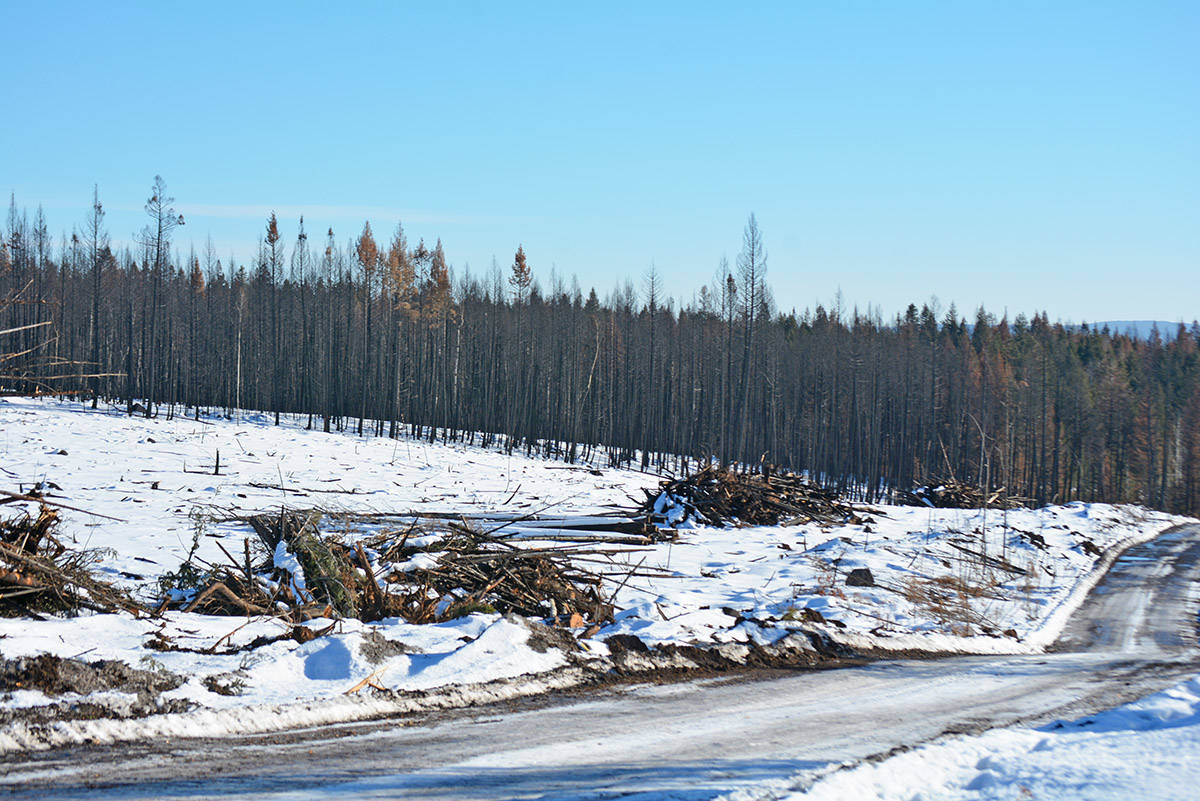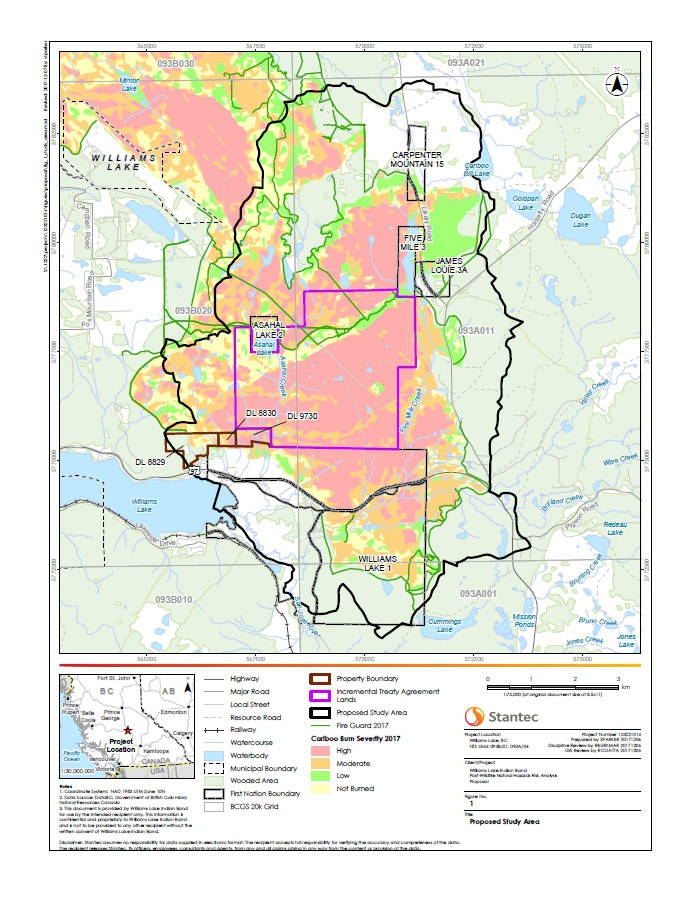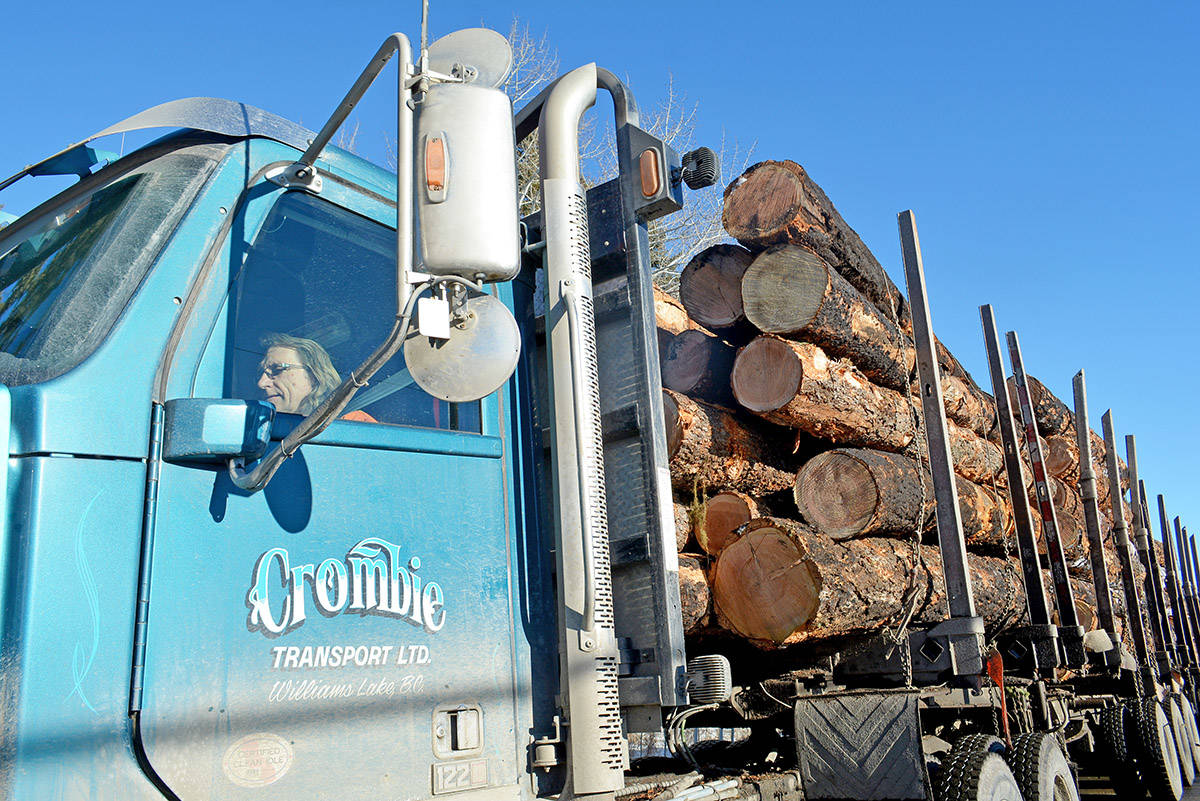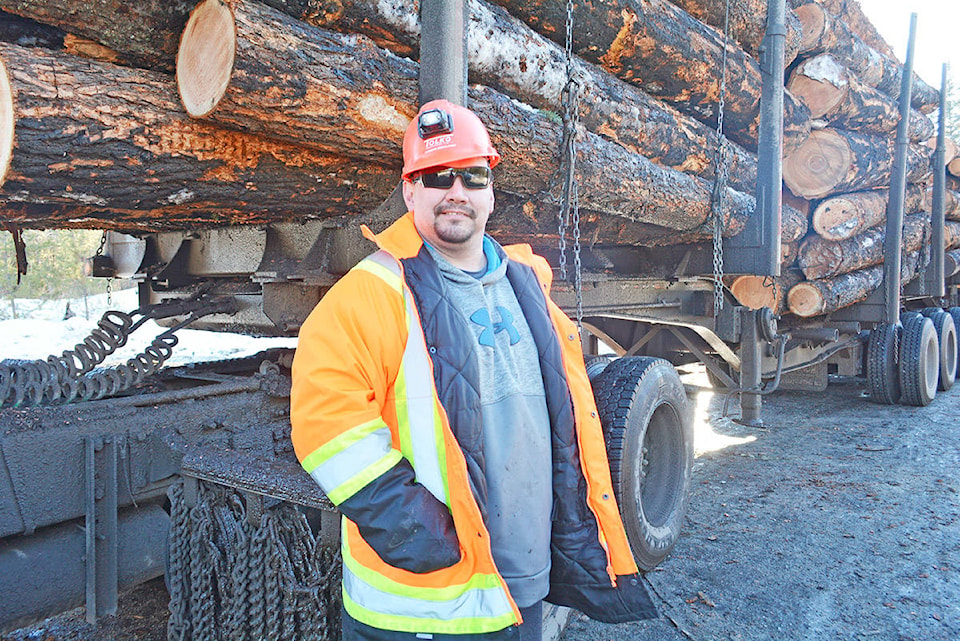Since mid-December, the Williams Lake Indian Band has been logging areas devastated by last summer’s wildfires.
“We estimate about 80 per cent of our timber was impacted by the fires,” the band’s economic development officer Kirk Dressler said. “With the on-reserve portion we are targeting timber that’s burned, and almost all of our Incremental Treaty Agreement land burned. We have a wildfire map that we went over with our consultant and it’s quite disturbing to look at.”
Band Coun. Willie Sellars said there is a sense of urgency to remove the timber while it is still viable.
“Unfortunately the value of the timber is already diminished because the only salvageable wood there is the fir,” he explained. “It seemed to hold up, it it was scoured, but the pine and deciduous is pretty worthless.”
For its salvage logging plan, the band hired an engineering services company as a consultant — Stantec — to help develop a recovery plan around environmental and geotechnical issues that resulted because of the wildfires.
“In reality we need to harvest the burned timber, but we are mindful that the combined activity of what happened, the soil from the fires and removing those dead trees, could potentially impact drainage, erosion and heritage and wildlife resources,” Dressler said. “We need to be in a position to understand those thoroughly and be able to mitigate them ideally prior to spring freshet.”
“We are self-governing, in terms of land management, of our reserve lands so we don’t have to request a federal approval process and can authorize our own permits on reserve land. It is in our woodlot so it does have some implications for our woodlot management.”
The band is also continues to negotiate its Incremental Treaty Agreement (ITA) with the province and once that is complete, will log some of the burned out areas on land involved with the ITA.
Sellars said the band is undergoing an archeological assessment in the burned areas, adding he continues to notice hot spots up on the top of the mountain.
In recent years, the band has partnered with the Ministry of Transportation and Infrastructure on a four-laning project, and there are concerns the wildfire damage will impact drainage for the project.
“There are already community concerns around the pedestrian underpasses, and now you look at some of those areas that burned really hot, and there is nothing there,” Sellars said. “What’s going to happen if everything just runs down hill?”
Read More: Home lost in Sugar Cane wildfire
The Ministry of The Ministry of Forests, Lands and Natural Resource Operations and Rural Development confirmed that by Jan. 12, cutting permits and authorizations for timber salvage specific to wildfires for about 464,000 cubic metres in the Williams Lake timber supply area have been issued.
Some of the work has focused on the 4,500 to 5,000 kilometres of fireguard with the Cariboo Fire Centre, said communications director Vivian Thomas on behalf of the ministry.
“Not all fireguards will need to be remediated and staff have been focusing on the highest priority areas,” Thomas noted.
“About 400 km of critical work has been completed which primarily focuses on highly unstable soil features, stream crossings, and restoring critical drainage features.”
In some instances, ministry staff have reported that three to four kilometres of fireguard can be rehabilitated in an hour, whereas a stream crossing and the immediate area surrounding it — the equivalent of 0.1 km — may take up to three days to complete, given the extensive nature of the work; isolating the stream, utilizing pumps to de-water the construction site, excavator, and personnel on the ground to install erosion control devices and grass seed.
Tolko Industries Ltd. Soda Creek division confirmed it has been receiving the wildfire-impacted timber, and preparing to do a test run processing it some time in February.
Read More: Tolko requests “fair” stumpage rate to harvest fire-damaged timber
news@wltribune.com
Like us on Facebook and follow us on Twitter



